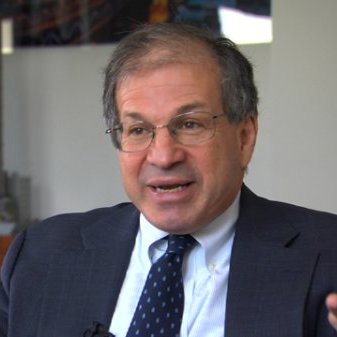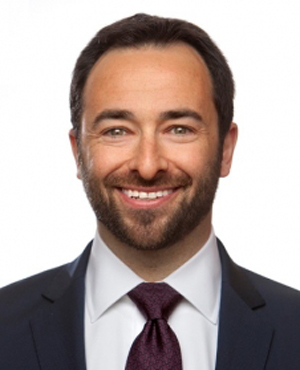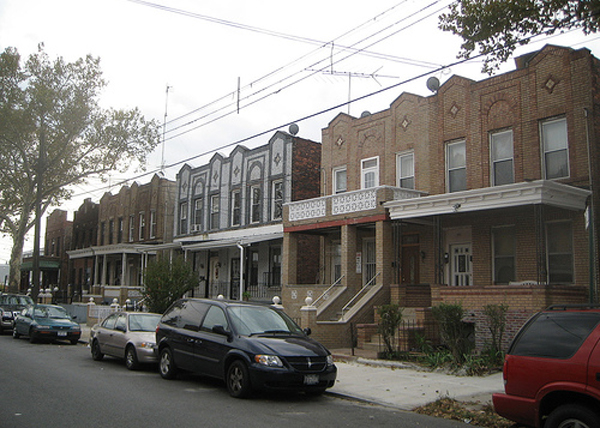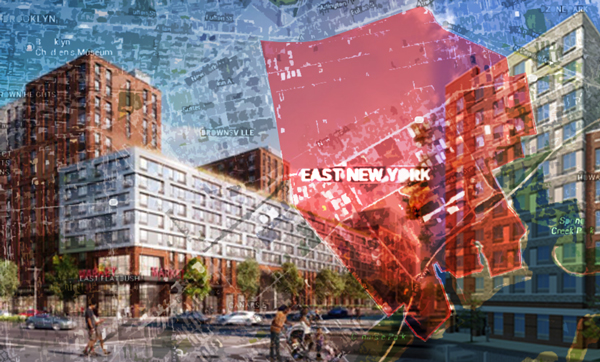Development in Brooklyn has seemed like an unstoppable force over the past few years, washing over neighborhoods and leaving behind a trail of luxury apartments and vegan-friendly restaurants in its wake.
As the boom has crept farther away from the waterfront and deeper into Kings County, some real estate professionals have become convinced that East New York will be the next neighborhood to experience a transformation. Others say its helium is largely manufactured by the city, and there are few signs that private development is marching east of Broadway Junction.
“The wave is in East New York now,” said Bill Wilkins, manager of the East Brooklyn Business Improvement District. “It was in Dumbo and Carroll Gardens and Vinegar Hill and Fort Greene and Clinton Hill and Crown Heights, so now it’s in East New York.”
Several major developments are on their way, but they are all affordable projects. Phipps Houses is building an affordable housing complex with 403 apartments at 3301 Atlantic Avenue and Alan Bell’s B&B Urban recently filed plans for a 100-unit affordable housing complex at 315 Linwood Street.
The Linwood Street development will be B&B Urban’s first Brooklyn project. Bell views the neighborhood as an ideal location for affordable housing, given the potential for gentrification moving forward.
“It’s got a lot of homeownership,” he said. “People don’t realize how may single family, two-family, three-family homes there are in East New York, and it’s the strength of the area.”

B&B Urban’s Alan Bell
Despite these developments — and $267 million from the city to improve schools, parks and infrastructure — East New York isn’t receiving the headline-grabbing, market-rate megaprojects that are in store for other developing parts of the city. In fact, you won’t find a single market-rate project of scale, let alone one that compares to the Durst Organization’s Hallets Point project in Astoria or Somerset Partners’ and the Chetrit Group’s complex along the South Bronx waterfront.
David Manheimer, co-founder of Brooklyn Standard Properties, said he thought the neighborhood had not seen a major market-rate project yet because developers do not see much of a difference between what they can charge for market-rate apartments and what they can charge for affordable ones.
“You can do affordable and still get market rents,” he said, “because the asking prices are not high enough on rents over there.”

HPD’s Simon Kawitzsky
Median asking rents in the neighborhood, which still ranks among the city’s worst in terms of crime and school performance, have climbed steadily over the past few years, rising from $1,400 in 2012 to $1,900 in 2016, according to StreetEasy. But they still lag far behind median asking rents throughout Brooklyn, which were $2,475 in 2012 and $2,550 in 2016, StreetEasy data shows.
“The rents that someone will pay to live in an apartment are driven by the demand for living in an apartment in that neighborhood,” said Simon Kawitzky, an assistant commissioner at the Department of Housing Preservation and Development, “and you’re not seeing people willing to spend that kind of money right now to support development without subsidies from HPD or HDC.”
Maybe some day
Bestreich Realty Group president Derek Bestreich is skeptical about how much of a boom there really is in East New York. He said that his multifamily properties in East New York have attracted little interest, and he noted that there are still parts of Brooklyn closer to Manhattan that have not been fully developed and remain more appealing to investors.
“Maybe there’s just a big spread between sellers’ expectations and where buyers are willing to buy, but there are not a lot of buyers that want to buy out there,” he said. “I think demand really starts to wane east of The Broadway Junction. West of Broadway Junction, it’s all in play.”
Bestreich added that he saw the buzz around East New York as being somewhat manufactured by the city.
“The city has to push its agenda, and New York City government has to bring the city to where they want to take it,” he said. “So they really focus on areas where they think they can make an impact and probably where property values are not as high.”

Bestreich Realty Group’s Derek Bestreich
The City Council approved a controversial rezoning of East New York last April as part of Mayor Bill de Blasio’s larger affordable housing plan. It stipulates that under Mandatory Inclusionary Housing, developers seeking a residential rezoning must set aside at least 25 percent of their apartments as affordable. The rezoning plan affects 190 blocks in East New York, Ocean Hill and Cypress Hills and the city believes it will eventually create more than 6,000 apartments. Half would be market rate, and half would be affordable for families of three earning between $23,350 and $69,930 annually.
Critics have lambasted the rezoning plan’s affordability component for not going far enough, and say they observed a huge spike in flipping as soon as the neighborhood’s rezoning was announced.
Sales on the rise
Though it’s not clear how much of the sales market movement stems from flipping, home sales appear to be on the rise. From the beginning of the year through May 31, 14 residential properties were sold in the neighborhood at an average price of $514,000, according to the Brooklyn MLS, which doesn’t include all transactions. This is significantly higher than 2012, when the database cataloged just 12 sales throughout the year at an average price of $350,000. Sales in 2017 are on pace to be higher than last year, when the MLS documented 17 sales at an average price of $425,000.

Rowhouses On A Street in East New York, Brooklyn
The neighborhood tends to be popular with blue-collar workers and young families, according to Anthony Franzese, broker/owner of the Brooklyn real estate firm Weichert Realtors—the Franzese Group. He acknowledged that East New York has not yet seen any noteworthy private projects but said that the hype around the neighborhood was real, noting that a recent open house his company did on Hemlock Street saw 93 visitors in two hours.
“People got really aware of it and started to realize it’s kind of like a last frontier here in Brooklyn,” he said. “There are really no places here where you can take $700,000 or $750,000 and still get a deal.”
Keller Williams Realty Empire broker Charles Olson agreed that East New York is heating up. He said he’s been able to sell houses in the neighborhood for above asking price, and described the area as popular with families looking for more affordable neighborhoods.
“As for the multifamily homes, the single-family homes, it’s your average middle-class families getting priced out of the downtown neighborhoods that are looking on the fringes,” he said.
If you ask City Council member Rafael Espinal, who represents East New York and supported the rezoning effort, the amount of affordable housing coming to the neighborhood is a positive development, since it keeps locals rooted in the community.
“My vision was to see more affordable than market rate be built, so I am currently satisfied that that happens to be the case,” he said, “and I hope that the affordable units continue to outpace market rate units in the future.”
